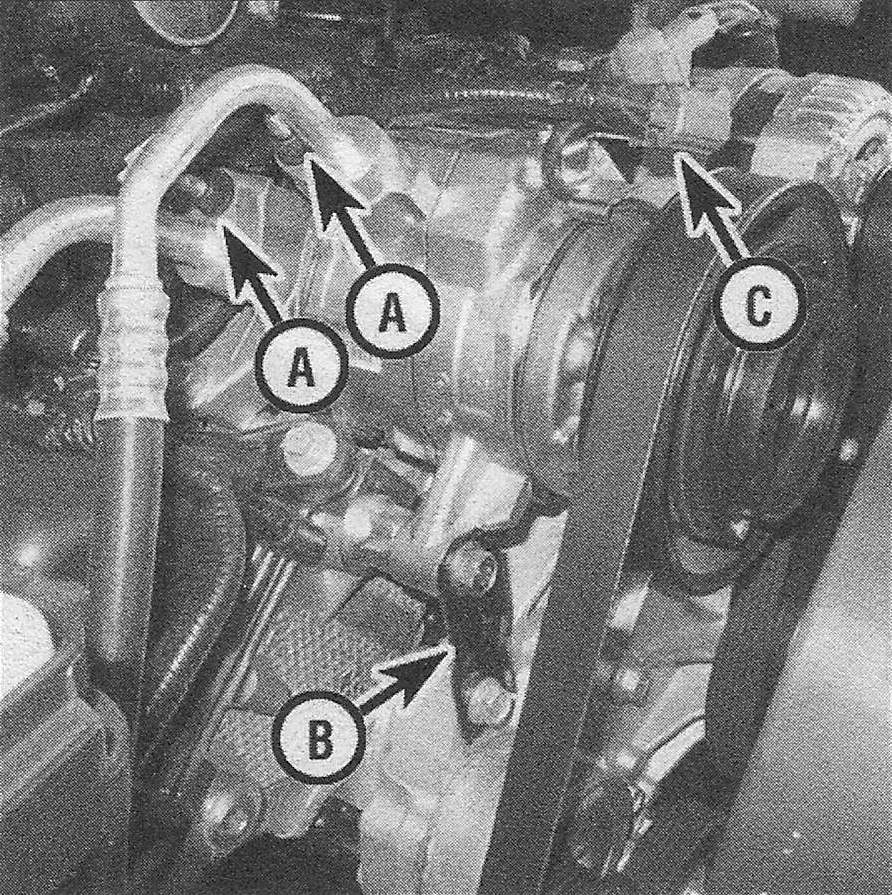Air conditioning compressor – removal and installation
Warning: The air conditioning system is under high pressure. Do not loosen any hose fittings or remove any components until after the system has been discharged. Air conditioning refrigerant must be properly discharged into an EPA-approved recovery/recycling unit at a dealer service department or an automotive air conditioning repair facility. Always wear eye protection when disconnecting air conditioning system fittings.
Note: The receiver-drier (which is integral with the condenser) should be replaced whenever the compressor is replaced (Air conditioning condenser – removal and installation).
1. Have the air conditioning system discharged (see Warning above).
2. Disconnect the cable (s) from the negative battery terminal(s) (see Engine electrical systems).
3. On 2010 and later diesel models, remove the air filter housing and the turbo outlet pipe (see Fuel and exhaust systems – diesel engine).
4. Disconnect the compressor clutch electrical connector (see illustration).
14.4 Air conditioning compressor details (4.7L V8 engine)
A Suction and discharge line attaching nuts
B Mounting bracket
C Wiring connector
5. Remove the drivebelt (see Tune-up and routine maintenance).
6. Disconnect the refrigerant lines from the compressor (see illustration 14.4). Plug the open fittings to prevent entry of dirt and moisture.
7. Unbolt the compressor from the mounting brackets and lift it out of the vehicle. Note: On Hemi engines, remove the alternator bracket mounting bolts and the compressor bracket.
8. If a new compressor is being installed, follow the directions with the compressor regarding the draining of excess oil prior to installation. Note: Any replacement compressor used must be designated as compatible with R-134a refrigerant.
9. The clutch may have to be transferred from the original to the new compressor.
10. Installation is the reverse of removal. Replace all 0-rings with new ones specifically made for air conditioning system use and compatible with R-134a refrigerant. Lubricate them with refrigerant oil. Any refrigerant oil added must also be compatible with R-134a refrigerant.
11. Have the system evacuated, recharged and leak-tested by the shop that discharged it.
